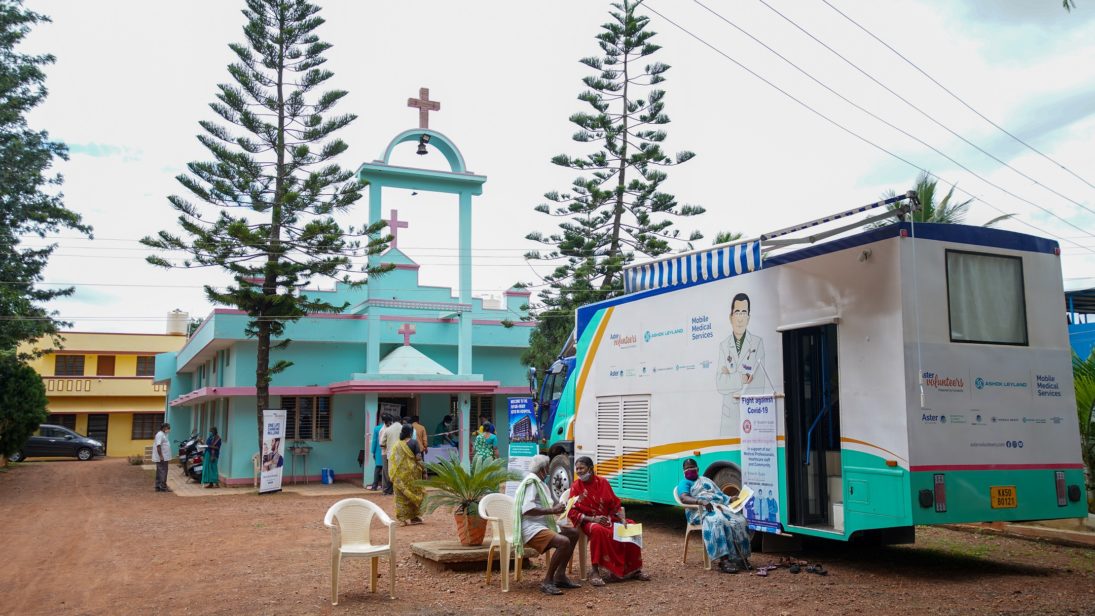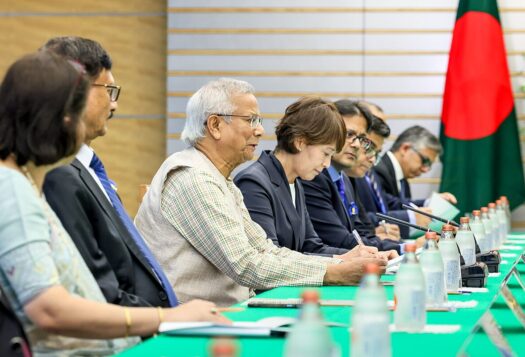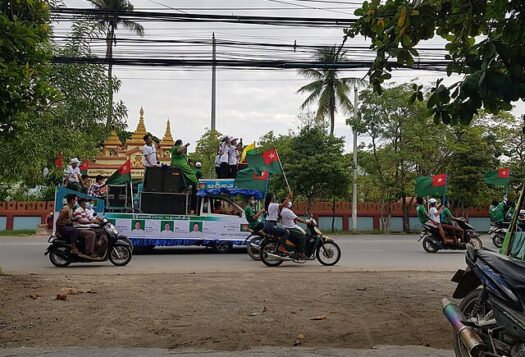
India has recently experienced a dangerous rise in COVID-19 cases yet again. As of April 22, new daily cases have exceeded 300,000 and daily deaths are above 2,000. India’s ongoing second wave has dwarfed the first one that hit the country in September 2020.
The Domestic Vaccine Drive
Preceding a troubling increase in COVID-19 cases is a tale of exemplary success: on April 10, India reported that it is the fastest nation to administer 100 million doses of COVID-19 vaccines, reaching the target in 85 days. Notably, India has been vaccinating its citizens using two “Made in India” vaccines: the Serum Institute of India (SII)-manufactured and AstraZeneca-Oxford-developed Covishield and Bharat Biotech’s Covaxin.
In its initial phase, India’s vaccination drive, which prioritized frontline workers, was unhelpfully sluggish. Government critics and voices from within India’s scientific community dubbed the indigenously-developed Covaxin the “BJP Vaccine” after the ruling Bhartiya Janata Party (BJP) received emergency approval of the vaccine before completing phase 3 trials. Skepticism surrounding the effectiveness of Covaxin coupled with rumors questioning the safety of the AstraZeneca vaccine initially weakened India’s inoculation drive.
India leveraged its domestic vaccination success to accomplish New Delhi’s larger foreign policy goals. Under the initiative of ‘Vaccine Maitri’ or Vaccine Friendship, India has supplied doses of made-in-India vaccines to 93 countries and United Nations Peacekeepers as of April 21.
The vaccine drive eventually picked up pace when vaccine manufacturers revealed the efficacy data for Covaxin and Covishield and as the country opened the vaccine to senior citizens and people aged 45 and above. Additionally, a convenient online and offline registration process arguably drew large numbers of Indians to get vaccinated. So far, the two vaccines have been administered for the price of INR 250 (approximate USD $3.30) at private health centers and for free at public health centers making them the cheapest in the world and accessible to Indians across the economic divide.
Vaccine Diplomacy Efforts
India leveraged its domestic vaccination success to accomplish New Delhi’s larger foreign policy goals. Under the initiative of “Vaccine Maitri” or Vaccine Friendship, India has supplied doses of made-in-India vaccines to 93 countries and United Nations Peacekeepers as of April 21. Doses of locally made vaccines were sent as grants to India’s neighboring countries in South Asia and the Indian Ocean Region, Africa, Latin America and the Caribbean, and the Pacific islands, as well as promised through COVAX to India’s traditional adversary Pakistan. Unsurprisingly, these regions are where many Indian foreign policy objectives are concentrated; including its “Neighborhood First” policy, Indo-Pacific policy, and its development-centric policy for the Global South. The country also provided crucial medical equipment to over 150 countries in the earlier phases of the pandemic. Arguably, its role during the pandemic strengthened its narrative as a force of global good, setting itself apart from China whose own vaccine diplomacy has shown “mixed results” and is considered an extension of its controversial mask diplomacy. More so, when China refused vaccines to Paraguay for the latter’s support of Taiwan, India stepped in to help Paraguay, revealing the geopolitical dividends of India’s vaccine diplomacy initiative.
Menacing Second Wave Engulfs India
Unfortunately, the explosive increase in COVID-19 cases over the last few days threatens to dampen these monumental gains. Through early April, India had been administering around 3 to 4 million doses daily—a figure close to the total daily production capacity of the country’s two vaccine manufacturers and the highest average doses administered by any country per day. However, it is still not enough. Many Indian states, including those severely affected by the second wave, have reported vaccine shortages. Instead of issuing an immediate ban on social gatherings to avoid overburdening the already fragile health infrastructure, political parties have continued to campaign in several state elections, facing sharp criticism for recklessly holding mass rallies. Recent religious gatherings and protests were also placed under the scanner for flouting social distancing norms.

Importantly, this vaccine shortage has severely impacted the rest of the world. India has for long been the “pharmacy of the world”—SII is the largest vaccine manufacturer in the world and Bharat Biotech has provided vaccines to over 123 countries. Prioritizing vaccines for use-at-home is creating a global vaccine, particularly in low-income countries that rely on supplies of Indian Covishield doses through the COVAX facility, an initiative that ensures global equitable access to the vaccine. Even as India has defended its vaccine diplomacy in favor of “equity and fairness” and in an effort to fulfill its contractual obligations to other countries, it is now under growing pressure to meet domestic demand before supplying the vaccine elsewhere.
The upsurge has also been met with severe travel restrictions. The United States, the United Kingdom, and Pakistan have recently restricted travel from India in light of the menacing second wave. Several high-level diplomatic visits have been canceled or postponed—including those of Prime Ministers from the UK and Japan to India, and Prime Minister of India Narendra Modi’s visit to Portugal.
The Road Ahead
Considering the apocalyptical COVID-19 situation in the country, India has decided to open its vaccine program to all adults. India recently approved the emergency use of Russia’s Sputnik V vaccine and is working towards approving other vaccines to fill the supply-demand gap for Covaxin and Covishield vaccines.
Despite local efforts to counter the pandemic, exports bans from the United States and European countries on critical raw material for vaccine production have endangered India’s inoculation program.
The Government of India approved an advance payment of nearly USD $600 million to local vaccine manufacturers to ramp up production. Additionally, the country has removed the price cap of INR 250 to incentivize manufacturers; SII is now set to sell the vaccines to private hospitals and state governments for INR 400 (USD $5.33) and INR 600 (USD $8.00) respectively, which is still cheaper than Chinese, Russian, and American vaccines. The government has promised that 50 percent of the vaccine supplies will be available for free at government facilities for those who are unable to pay, and several states have vowed to vaccinate all adults for free.
However, despite local efforts to counter the pandemic, exports bans from the United States and European countries on critical raw material for vaccine production have endangered India’s inoculation program. The burgeoning rise in COVID-19 cases in India could be contained if its vaccine manufacturing capabilities are restored to allow it to vaccinate its billion-plus population while providing critical vaccine supplies to the rest of the world.
***
Image 1: Trinity Care Foundation via Flickr
Image 2: Gwydion M. Williams via Flickr


